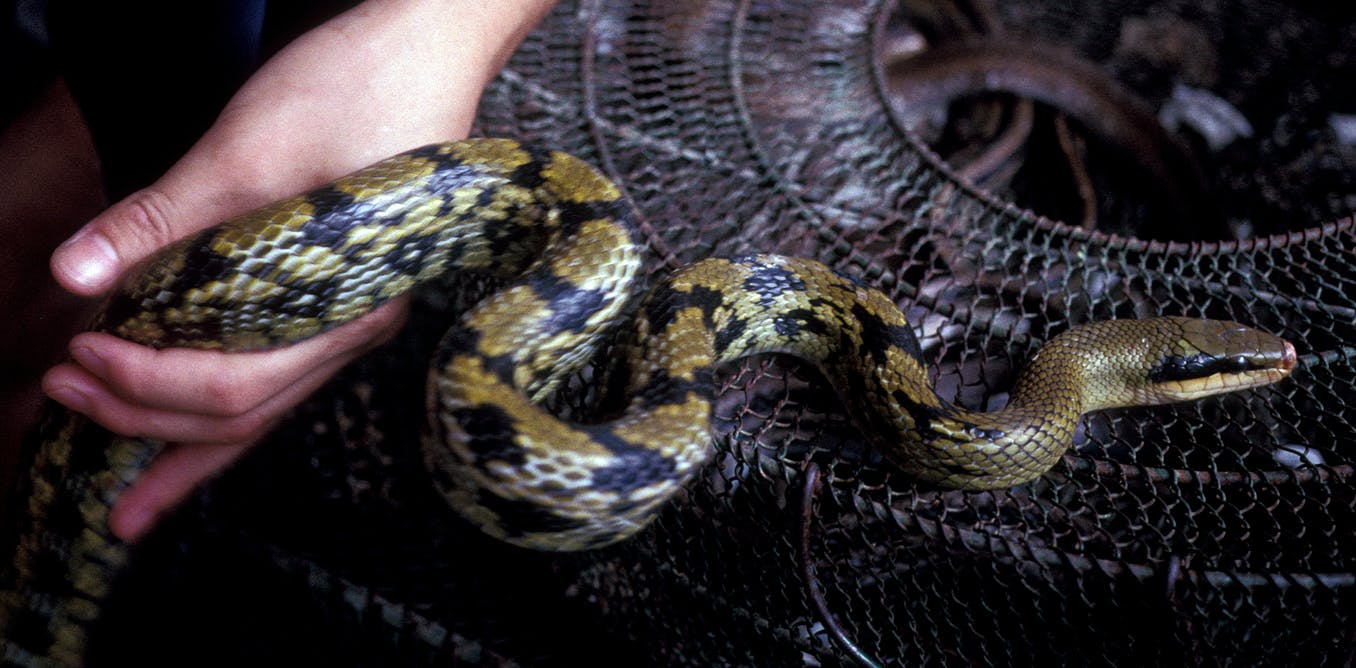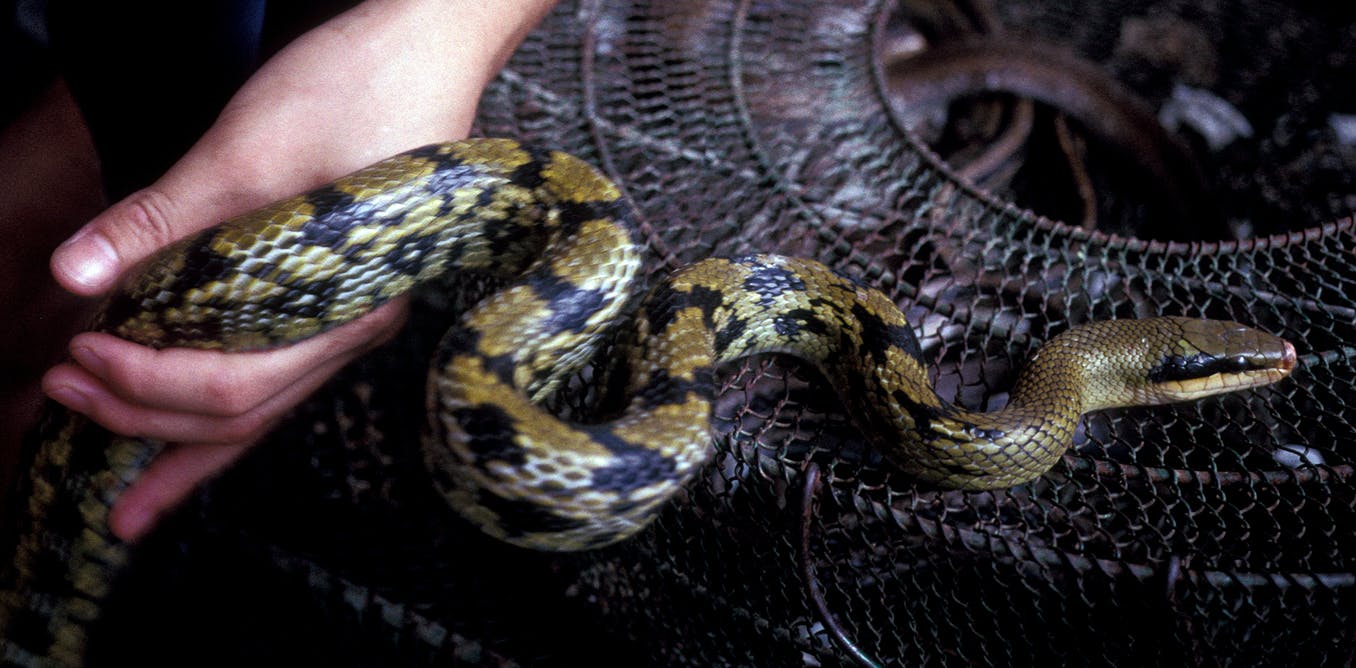World leaders are attending an online summit to discuss the future of life on Earth. With one million species threatened with extinction this century, the UN biodiversity conference, known as COP15, is supposed to yield a new global plan for protecting nature. The host nation, China, has committed to protect more of its land for nature. But one of the most radical and far-reaching measures introduced by the Chinese government in recent years came at the beginning of the pandemic.
COVID-19 has shown the risk to human health posed by the trade in and consumption of wildlife. To strengthen the protection of wildlife and to reduce the risk of zoonotic viruses spilling over into human populations, China issued a ban on eating wild meat and the related trade in February 2020. This targeted the illegal wildlife trade and poaching, but also the legal farming and selling of terrestrial wildlife for food – from snakes to bamboo rats – which previously was possible through a complex system of licences.
It still allows people to eat certain species, such as sika deer, which are farmed according to established techniques and pose a low risk to human health. The ban doesn’t apply to wild aquatic species, such as fish. Nor does it cover other uses of wildlife, such as rearing species for medicinal purposes or as pets.
Critics argue that improved regulation, rather than an outright ban, would be a better solution, maintaining the benefits of the trade for local communities while reducing pressure on wild populations and health risks. But for that to work, the Chinese state would need to manage the wildlife trade. And our research, published in Current Biology, revealed that China’s existing laws and regulations covering the wildlife trade are insufficient.
The ban, then, is a useful, short-term stop gap, but must now be backed up by updated, evidence-based legislation and regulation for the future.
The 2020 ban aimed to close loopholes in existing legislation, such as China’s Wildlife Protection Law, which was last amended in 2016 and is being revised again now. This law legalised and regulated the wildlife trade through a complex license system. Before the ban, most wildlife species could be farmed and traded for different purposes legally as long as a license had been granted.
Troublingly, there was no evidence-based framework for establishing which species could be farmed and traded and which couldn’t. This meant that species which were potential vectors of zoonotic diseases, or declining in the wild, could still slip through the regulatory net and be farmed and traded legally. There was also little collaboration between the different government departments responsible for supervising the trade in wildlife, such as those covering forestry, markets and agriculture.
A booming business
At the beginning of 2018, the Chinese government began promoting the farming of wildlife as a means of reducing rural poverty. The state offered loans and broadcast programmes about successful wildlife farmers on Chinese television to entice more people into joining the industry. Official state and provincial licenses granted for the trade in and farming of wildlife trebled between 2017 and 2019. But the number of criminal cases related to the illegal hunting or trade in wildlife increased over the same period too, suggesting the system was unable to control unlawful practices in the industry.
There were also problems with the licenses granted lawfully. We looked at 13,121 trade licenses granted by state and provincial Forestry Bureaus between 2001 and 2020. Under these licenses, 254 species were traded legally for different commercial purposes, of which 69 – including masked palm civets, red deer and common buzzards – have been identified as possible hosts or vectors for at least one zoonotic disease.
Equally troublesome was the pre-ban legislation’s approach to quarantine. The law required all wildlife to be quarantined before entering a market, but the official methods suggested for doing this were patchy at best. There were protocols in place for domestic species, such as pigs. But while some similar wild species, such as boar, could be quarantined under the protocols for related domestic animals, no rules were in place for widely-traded species such as bamboo rats, palm civets or porcupines.
Bamboo rat meat is a popular commodity among China’s poor traders. Gerardo C.Lerner/Shutterstock
Under the ban, only a limited number of species can be farmed, depending on whether quarantine standards are available and whether farming techniques are cost-effective and safe enough for wild populations and human health.
To safely govern the trade in wildlife in the future, quarantine protocols for different species must be informed by the latest scientific evidence. Licensing and tracing – perhaps by introducing microchipping – of legitimately farmed animals should also vary according to each species and what evidence suggests is most likely to reduce the risk to human health and the conservation of species in the wild. And there must be closer collaboration between government departments and farmers and traders, both within China and internationally.
But it is also important to reduce the demand for wildlife as food in China. While COVID-19 has highlighted the potential risks of trading and eating wildlife, these lessons must extend to trading and farming wildlife for other purposes, such as medicine and pets.
Evidence-based changes to the way China manages its wildlife trade could help inspire and inform policies at COP15, especially among the leaders of developing countries facing a similar situation at home.




